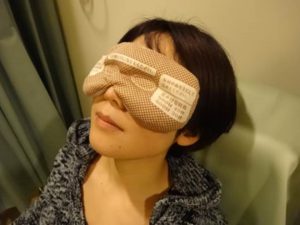Part 2 of a multi-center study by the LIME W. G. compared the useful of different warm compresses, and a manuscript describing our study has been accepted for publication in Ocular Surface!
- informaiton , research
- April 19, 2015
the Warm Compress Sub-group (Drs. Arita, Morishige, and Shirakawa) of the LIME Working Group conducted a multi-center study on the
Effects of eyelid warming devices on tear film parameters in normal subjects and patients with meibomian gland dysfunction
and a paper describing this study was accepted for publication in Ocular Surface.
Our study used parameters of tear film stability, the temperature of the eyelid, the palpebral conjunctiva, and the cornea, and quantitative assessment based on meibography to compare the effectiveness of 5 kinds of warm compresses in eyes with meibomian gland dysfunction and normal eyes. These compresses are all commercially available.
Our paper indicated that the Azuki-no-Chikara (Kiribai Chemical) was particularly useful. Patients with MGD were asked to use the Azuki-no-Chikara two times a day (5 minutes each time) for one month. The Azuki-no-Chikara benefited the region of the meibomian glands, it improved parameters for tear film, and it continued to increase the temperature of the palpebral conjunctiva.
A point worth noting is that our paper included a hot towel as a warm compress.
A hot towel rapidly heats up (45ºC or warmer). Its temperature decreases 5ºC every minute. After 5 minutes, its temperature fell to about 25ºC. A hot towel on the face feels good on your face at the barber, but obtaining a stable temperature in order to dissolve meibomian lipids is difficult. In a normal eye, meibomian lipids have a melting point between 25ºC and 32ºC. Keeping the temperature in or above that range for a given period (5 minutes or longer) causes lipids to dissolve. If a patient still wants to use a hot towel, steps have to be taken so that its temperature remains high (wrapping the towel in plastic wrap or putting it inside a plastic bag). However, placing a towel at a temperature of 42ºC or hotter on the eyelids can cause a Fischer-Schweitzer polygonal reflex (wrinkling of Bowman’s membrane). Raising the temperature of the aqueous humor can affect the lens of the eye and potentially affect the corneal endothelium or cause intraocular inflammation. Given those facts, commercial warm compresses should be placed on the eyelids in a safe manner.
A number of papers here in Japan and overseas have examined use of eyelid cleansers along with warm compresses as a form of at-home care for patients. Both eyelid cleansers and warm compresses have proven useful.
The LIME Working Group will work to inform the public about the use of warm compresses and eyelid cleansers as a form of eyelid care.



